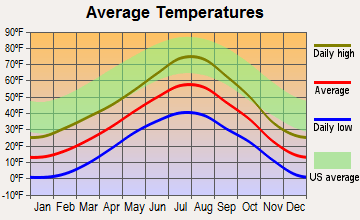As the clock ticks, it looms ever more ominously; the countdown to climate catastrophe is not just an abstract notion but a harbinger of imminent peril. The metaphorical clock, which has been ticking away since the dawn of the industrial revolution, illustrates humanity’s race against time. Each tick represents the depletion of our window for decisive action to combat climate change, underscoring the gravity of the situation we currently face. Scientists warn that if we do not curtail greenhouse gas emissions, the repercussions will be catastrophic. But just how long do we have before the proverbial clock strikes zero?
The timeline is influenced by myriad factors, including our current emissions trajectory, technological advancements, and policy decisions at both national and international levels. The Intergovernmental Panel on Climate Change (IPCC) has provided us a stark ”ticking” backdrop, presenting scenarios that dictate our future based on the choices we make today. The latest assessments indicate that we are on a path to warming the planet by 1.5 degrees Celsius above pre-industrial levels within a decade, with devastating consequences for ecosystems and human societies alike.
Understanding the urgency requires delving into the concept of “carbon budgets.” Just as a financial budget delineates the limits of our spending, a carbon budget specifies the amount of carbon dioxide we can emit while still maintaining a liveable planet. Each tonne of carbon emitted diminishes this budget, narrowing the window until potential warming reaches disastrous levels. Current estimates dictate that we have a mere 300 gigatonnes of CO2 left to emit before surpassing this threshold, further accelerating the urgency of climate action.
The metaphorical clock’s hands are propelled forward by several factors, the most substantial being our daily activities. Transportation, industrial processes, and energy consumption all contribute to this relentless countdown. The grim reality is that, as global energy demands surge, so too do carbon emissions. The reliance on fossil fuels continues to exacerbate the issue, obstructing the very solutions we desperately need. To combat this trajectory, transitioning to renewable energy sources is paramount. The burgeoning field of solar, wind, and hydropower offers a glimmer of hope. However, this transition requires not only technological innovation but also political will and public support.
In assessing the timeline for reaching climate catastrophe, it is crucial to acknowledge the tipping points that, once crossed, can irreversibly alter our planet’s climate systems. These tipping points act like a switch, turning an ongoing gradient into an abrupt shift. For instance, the melting of Arctic ice reduces the Earth’s reflectivity, accelerating warming even further. Similarly, the thawing of permafrost releases vast quantities of stored methane, a greenhouse gas far more potent than carbon dioxide in the short term. Each of these events signals a turn of the clock, pushing us closer to an irretrievable landscape of climate catastrophe.
So, when will the clock hit zero? The answer is not fixed in stone; it is elastic, hinged on human endeavor. Scientists estimate we must dramatically reduce carbon emissions by 45% by 2030 and achieve net-zero emissions by 2050 to have a chance at avoiding the most catastrophic outcomes. These are not mere aspirations; they are essential targets. Nonetheless, inaction gives rise to a future marked by extreme heatwaves, severe droughts, and more frequent natural disasters.
Furthermore, social and economic disparities amplify the existential crisis posed by climate change. Vulnerable communities are often the first to bear the brunt of climate-induced calamities. Rising sea levels threaten low-lying regions, while extreme weather patterns disrupt agricultural outputs. The dire need for climate justice recognizes that those least responsible for the crisis usually suffer its most severe consequences. In this context, the ethical dimensions of the climate crisis must be acknowledged. Addressing climate change is not solely an environmental imperative; it is also a mandate to foster equity and solidarity among all peoples.
Engagement in widespread activism and grassroots movements plays a pivotal role in influencing policies and actions toward climate mitigation. Advocates are rallying to demand systemic changes from corporations and governments alike, igniting a movement fueled by determination and urgency. The growing momentum of climate activism symbolizes a collective resolve—where the hands of the clock can be turned back, or at the very least, slowed if not stopped altogether.
Ultimately, the countdown is a confluence of science and sociology, a reminder that our collective choices are etched in the fabric of our planetary future. While the scenario may seem grim, it offers an opportunity for unprecedented collaboration. Communities nationwide—and globally—are welcomed into a shared mission to reduce emissions, conserve resources, and foster sustainable practices. The more we unite to understand the urgency of the climate clock, the more we can influence its pace.
In summary, the question of when the climate clock will hit zero hinges on our present actions and choices. By recognizing the pressing need to alter our trajectory and embracing innovative solutions, we can push back against the inexorable march of catastrophic climate change. The challenge is great, but the potential for systemic transformation is even greater. We must take courage in this collective struggle and commit ourselves to prevent the clock from striking zero—a race we can only hope to win if we all participate.






